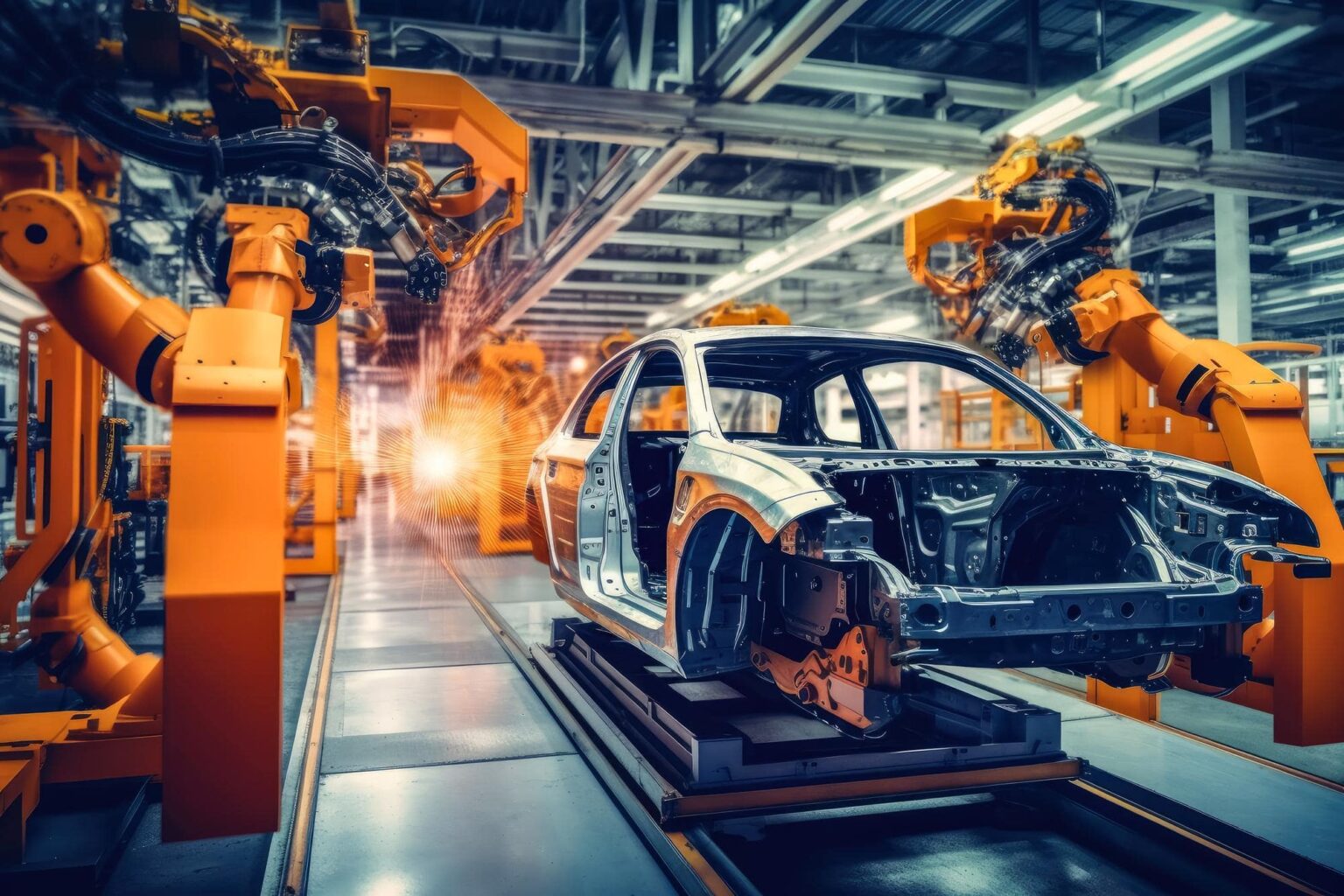Robotics plays a crucial role in automotive assembly, streamlining production processes, improving efficiency, and enhancing quality control. Here’s how robotics is transforming automotive manufacturing:
- Automated Assembly: Robotics automates repetitive and labor-intensive assembly tasks in automotive production lines. Industrial robots equipped with precision tools, grippers, and sensors can perform tasks such as welding, riveting, fastening, and painting with high speed, accuracy, and consistency. Automated assembly reduces cycle times, minimizes errors, and increases throughput, leading to higher productivity and lower production costs.
- Flexible Manufacturing: Robotic systems in automotive assembly are designed for flexibility and adaptability to accommodate changes in production processes and product configurations. Collaborative robots, or cobots, work alongside human operators in shared workspaces, enabling seamless collaboration and easy reconfiguration of production lines. Flexible robotic cells and modular automation systems allow manufacturers to quickly adjust to changing market demands and production requirements, improving agility and responsiveness in manufacturing operations.
- Precision and Quality Control: Robotics enhances precision and quality control in automotive assembly by minimizing variations and deviations in production processes. Vision systems, sensors, and advanced algorithms enable robots to inspect parts, components, and assemblies for defects, dimensional accuracy, and alignment. Automated quality control processes identify and rectify defects early in the production process, reducing rework, scrap, and warranty claims while improving product quality and reliability.
- Safety and Ergonomics: Robotics improves workplace safety and ergonomics for automotive assembly workers by automating hazardous, strenuous, and repetitive tasks. Robots handle heavy loads, operate in confined spaces, and perform tasks in hazardous environments, reducing the risk of workplace injuries and occupational hazards. Collaborative robots equipped with advanced safety features, such as force sensing, collision avoidance, and speed control, ensure safe interaction with human operators, enabling close collaboration and cooperation in assembly operations.
- Efficient Material Handling: Robotics optimizes material handling and logistics in automotive assembly by automating material flow, inventory management, and parts replenishment processes. Automated guided vehicles (AGVs), autonomous mobile robots (AMRs), and robotic arms equipped with grippers and conveyors transport materials, components, and subassemblies between production stations, warehouses, and storage areas. Robotic material handling systems reduce lead times, minimize inventory levels, and improve inventory accuracy, enhancing overall efficiency and productivity in manufacturing operations.
- Predictive Maintenance: Robotics enables predictive maintenance and condition monitoring of equipment and machinery in automotive assembly plants. Sensor-equipped robots collect real-time data on equipment performance, vibration levels, temperature, and energy consumption, enabling predictive analytics and machine learning algorithms to detect potential faults and failures before they occur. Proactive maintenance interventions, such as lubrication, calibration, and component replacement, prevent unexpected downtime, optimize equipment uptime, and extend the service life of robotic systems.
- Continuous Improvement and Innovation: Robotics fosters continuous improvement and innovation in automotive assembly by driving process optimization, efficiency gains, and technological advancements. Manufacturers leverage robotics to implement lean manufacturing principles, value stream mapping, and Kaizen methodologies to identify waste, eliminate non-value-added activities, and improve overall process efficiency. Automation also enables manufacturers to invest in research and development initiatives, exploring new technologies, materials, and production methods to enhance competitiveness and drive innovation in the automotive industry.
Overall, robotics plays a central role in streamlining production processes, improving efficiency, and enhancing quality control in automotive assembly. By leveraging robotics technologies, manufacturers can achieve higher productivity, better product quality, and greater operational flexibility, positioning themselves for success in an increasingly competitive and dynamic market.



